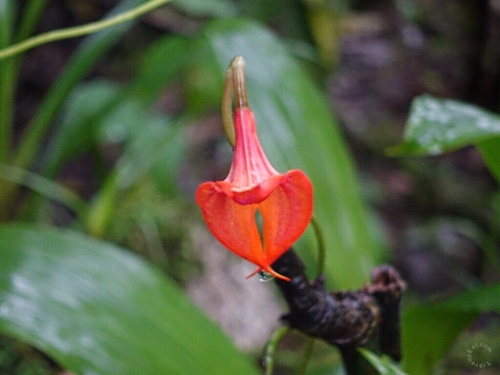
When we visited Machu Picchu, we stayed at the Inkaterra Machu Picchu Pueblo Hotel. The hotel has 372 different native orchid species in their natural habitat, the world record according to the American Orchid Society. Many things are said about orchids. They are extremely diverse, have colorful and fragrant blooms, are the most widespread family of flowering plant, and some have evolved bizarre ways to cross pollinate. There are between 21,950 to 26,049 currently accepted species including Vanilla (the genus of the vanilla plant). This is more than twice the number of bird species, and about four times the number of mammal species. The Andean cloud forest is a habitat which is home to a large diversity of orchids. Among the most significant sites from which to appreciate these stunning flowers is undoubtedly the Machu Picchu Natural Reserve, with a wide variety of native species and genus. Some of the most remarkable assembled at Inkaterra Machu Picchu are: the minuscule Lepanthes, Trichosalpinx and Stelis; some of the largest, like Phramipedium caudatum and Sobralia aff. setigera; and the fragrant Anguola virginalis, Lindley Ida locusta and Lycastemacorphylla.
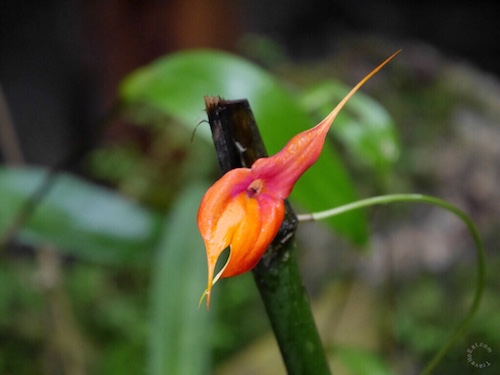
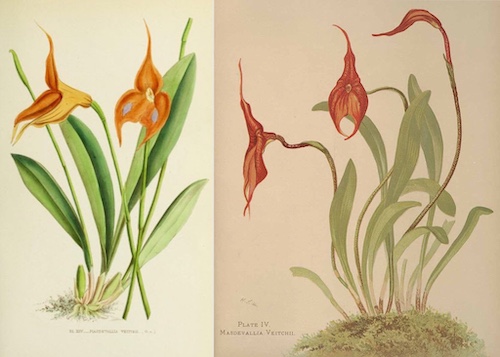
Masdevallia veitchiana also known as Veitch’s masdevallia or king of the masdevallias, is a species of the Masdevallia genus of orchids. The plant is found in the wild in northwestern Peru, where it is known as gallo-gallo, meaning “rooster” after the rooster-like red comb, crest and wattles of the flower. and Colombia. The plant was named in honour of Harry Veitch, of the Veitch Nurseries family, by whose plant-hunters it was discovered in 1867, and who imported, cultivated, and first flowered this species. It was discovered in 1866 in the high Andes by Pearce, an English plant collector. Long considered the national treasure of Peru, it is rumoured to have been cultivated by the Incas centuries ago, who called the plant waqanki or wackanqui. It is particularly associated with Machu Picchu, in fact it is called the king/queen of Machu Picchu.
Hortus Veitchii
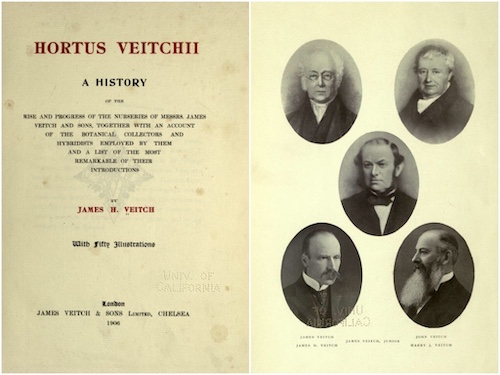
In 1906 Veitch, assisted by various members of his family, prepared for private distribution, under the title of Hortus Veitchii, a sumptuous history of the firm and its collectors, illustrated with portraits. The botanical nomenclature was revised by George Nicholson, curator of the Royal Botanic Gardens, Kew. Hortus Veitchii is an essential reference for plants introduced during the Victorian era, listing many which are still available from nurseries today and therefore helping gardeners to accurately replicate historic gardens within that period. This is also important for those wishing to preserve rare plants introduced to Britain at that time, as well as being a fascinating historical account of Victorian plant collecting.
Masdevallia
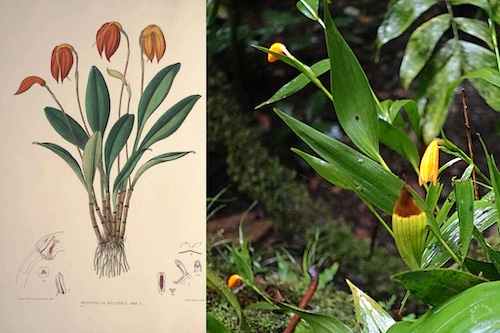
Masdevallia coccinea, the little flag, is a species of orchid occurring at high altitudes in the Eastern Cordillera of Colombia and Peru. This genus seems to come in red and yellow and has a similar appearance to Masdevallia veitchiana.
Photography and Timing the Visit
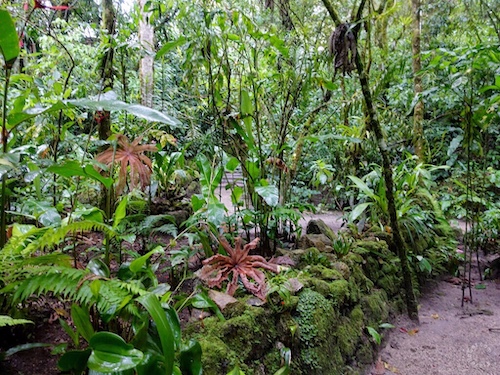
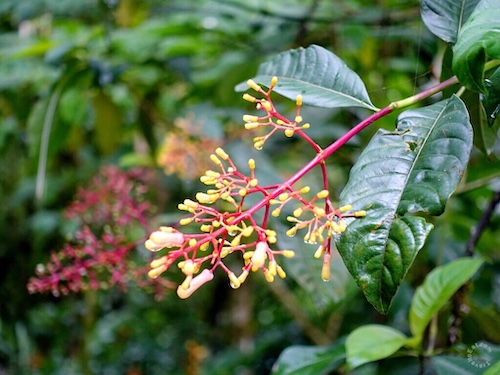
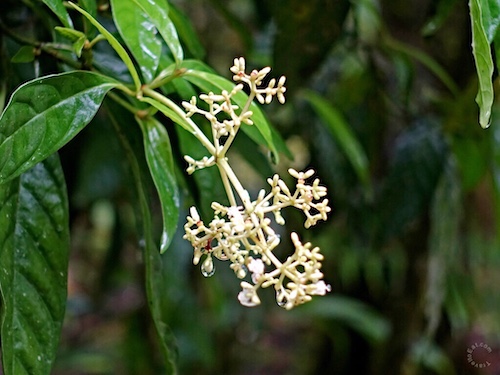
In Machu Picchu it never gets really cold, or really hot. The warmest weather is from November to March but this also corresponds to the rainy season. In other words, higher temperatures do not correlate to great weather at Machu Picchu. Year round, during the day, average temperatures are 65-70 degrees Fahrenheit while at night it can get more chilly from 30-40 degrees Fahrenheit. Rain occurs almost daily from November until March. The heaviest rain is in February, which is also when the Inca Trail path is closed for maintenance. Orchids love the rain, blooming season begins in October/November and continues until March. No matter when you go, you will miss some flowers, blooming either before or after your visit. I went over Christmas last year and the combination of the rain and temperature made photography difficult, you definitely want to bring rain gear for yourself and your camera. Lighting is also an issue, it is overcast, raining and you are at the bottom of a rain forest. You can use on camera flash but it gives the pictures an unnatural harsh appearance. Full disclosure, I brought a tripod and an external led light but the rain, temperature and time constraints meant I did not set up properly and I really did not have a macro lens, I used a 600mm zoom. I really did not appreciate the tiny nature of the orchids and I would have both a true macro lens and macro lighting if I did it over, giving a greater depth of focus in low light (also a magnifying glass) All of this said, I am very happy with the photographs I took, I am aware they could be better.
Epiphytes
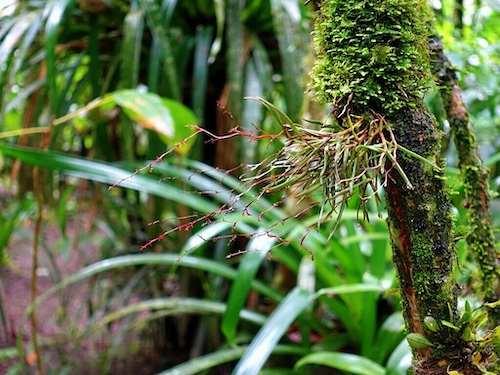
Orchids can grow on the ground (terrestrial), on rocks (lithophytes) or as epiphytes. Epiphytes are plants which grow above the ground, that grow on top of other plants. They are not planted in the soil and are not parasitic (i.e. they do not feed on other plants, however some types still damage their host in various ways). By growing on other plants, the epiphytes can reach to the light better or where they can avoid struggling for light. In plant systematics Epidendroideae is a subfamily of the orchid family, Orchidaceae. Epidendroideae is larger than all the other orchid subfamilies together, comprising more than 15,000 species in 576 genera. Terrestrial orchids may have rhizomes or form corms (like bulbs) or tubers. On the ground, a rhizome is a modified subterranean stem of a plant that is usually found underground, often sending out roots and shoots from its nodes. Rhizomes are also called creeping rootstalks and rootstocks. Roots that grow above the surface of an orchid are called aerial roots. I will leave this subject here since there are many good references on this subject.
Maxillaria
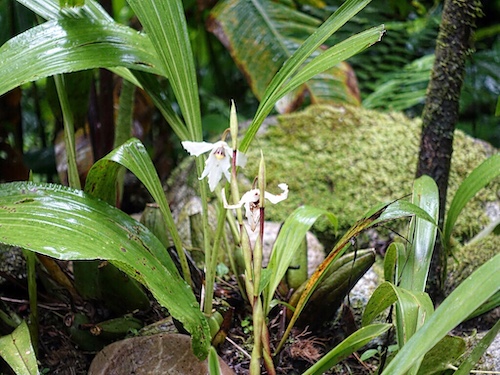
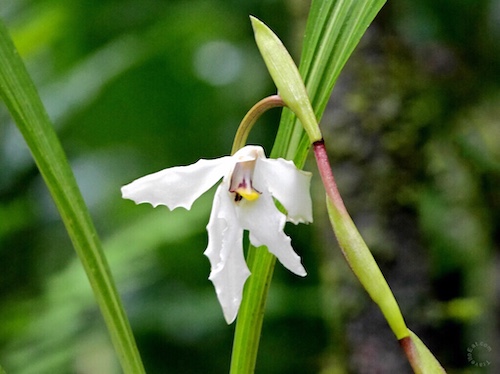
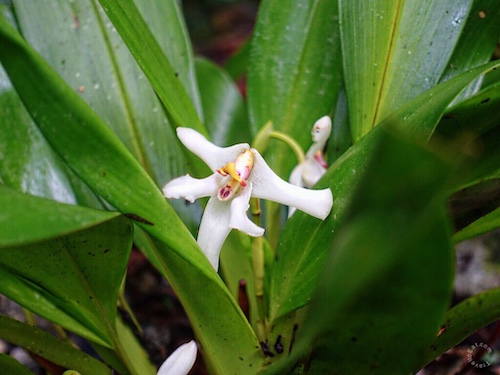
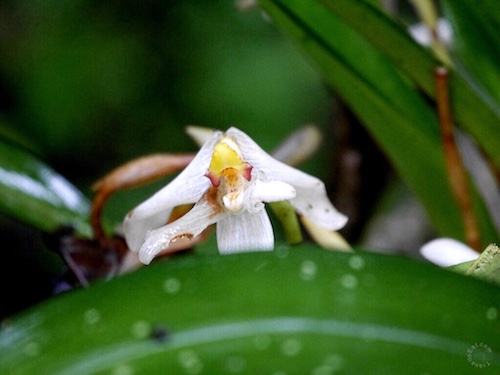
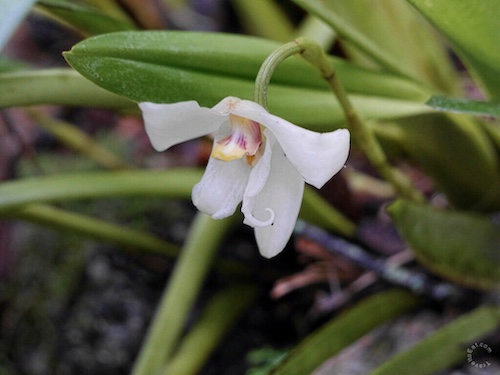
Maxillaria platypetala was first described by Ruiz & Pavon in 1798 (synonym Dendrobium polypetalum Steud.). Maxillaria, abbreviated as Max in the horticultural trade, is a large genus of orchids (family Orchidaceae). This is a diverse genus, with very different morphological forms. Their characteristics can vary widely. They are commonly called spider orchids, flame orchids or tiger orchids. Their scientific name is derived from the Latin word maxilla, meaning jawbone, reflecting on the column and the base of the lip of some species, that may evoke a protruding jaw. Recent molecular studies have found Maxillaria as it has long been viewed to be a unnatural hodgepodge composed of groups not closely related to each other. Hence it has been proposed that the genus should be split into several genera, proposals that have been gaining acceptance. Some of the species long considered members of Maxillaria have been moved to other genera. Maxillaria species still included in the smaller version of the genus are distributed in the rainforest at sea level to elevations of 3,500 m, in Latin America from central Mexico to Bolivia, as well as in the West Indies. This orchid looks a little like Hirtz’s Bollea (Bollea hirtzii).
Xylobium
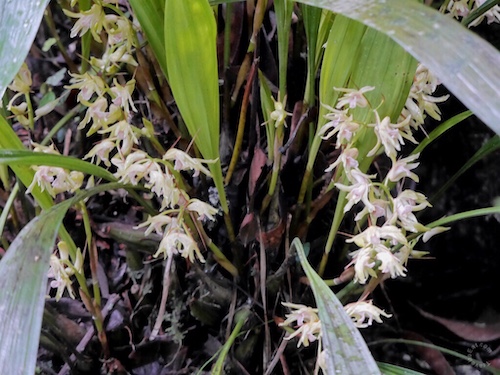
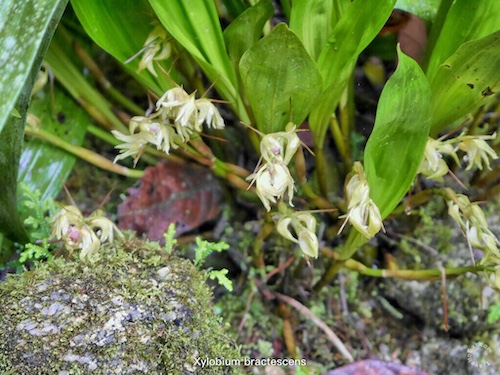
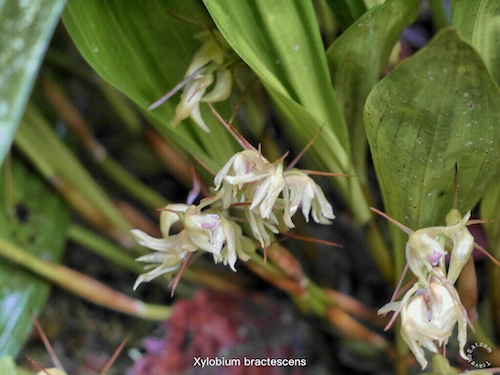
Xylobium, abbreviated Xyl in horticultural trade, is a genus of plant in family Orchidaceae. It contains about 35 species native to tropical America. Found in Colombia, Ecuador and Peru at elevations of 1800 to 2900 meters as a small sized, cool to cold growing terrestrial. From the Greek word xylon (long) and bios (life) referring to the usual epiphytic habit of Xylobium species. They grow well in pots under moderate shade.The inflorescences are often short with the flowers a tight cluster at the base of the pseudobulbs. There is not much written on this genus and the pictures above are the only ones I have. I have based the classification on leaves and blooms. Other options are Leptotes bicolor (too many stems) or Stanhopea candida (epiphytic) which are neither good candidates.
Sobralia dichotoma
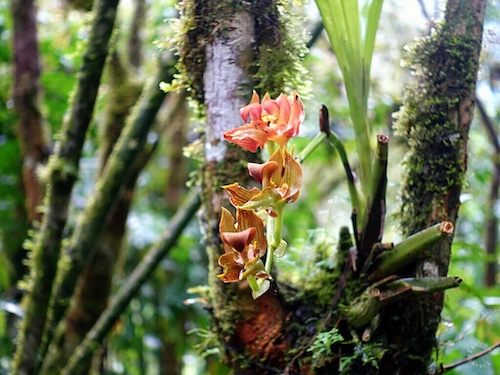
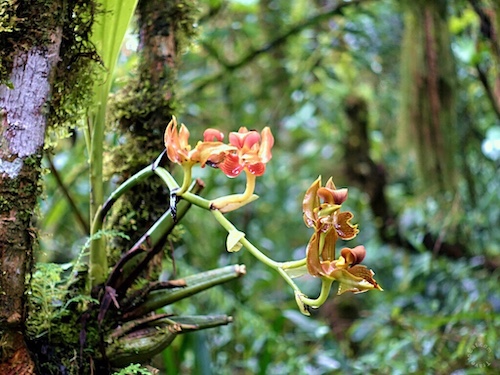
The large and highly colorful flowers of Sobralia dichotoma are produced from the apices of the reed-like stems, and as one flower dies, another one blooms, with often six or more being produced in succession. Unlike its warm-growing cousins from Costa Rica (S. mucronata and S. lindleyana, S. dichotoma is found in the high-altitude Peruvian Andes.
Epidendrum secundum
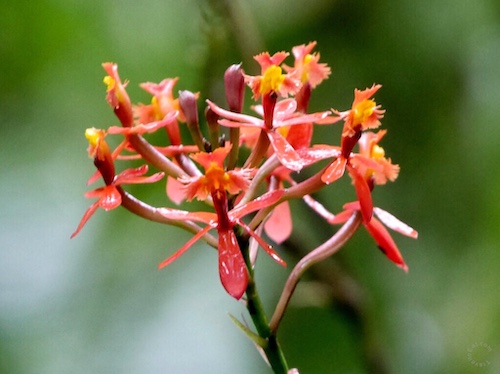
Epidendrum secundum, one of the crucifix orchids, is a poorly understood reed stemmed species, which Dressler (1989) describes as “the Epidendrum secundum complex.” According to Dressler, there are dozens of varieties, some of which appear to deserve species rank. Arditti and Ghani note that E. secundum has the distinction of bearing the longest seeds known in the Orchidaceae, 6.0 mm long. By comparison, the seeds of E. ibaguense (another crucifix orchid) are only 2.9 mm long. Epidendrum secundum occurs in the montane forest of the Neotropics (up to 2 miles high), including Cusco, southeastern Peru and Brazil. It has also been found in disturbed roadside habitats in Picingauba, Brazil, near sea level, together with E. fulgens and natural hybrids between the two. Huiñayhuayna (Epidendrum secundum).
Restrepia
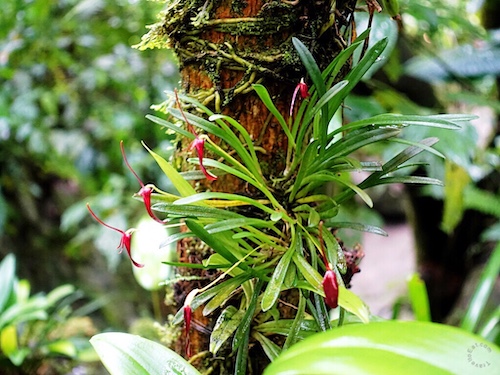
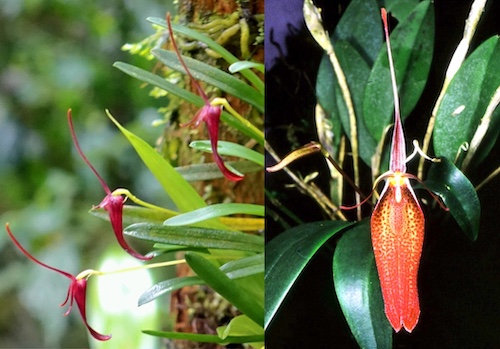
Restrepia, abbreviated Rstp in horticultural trade, is a small genus of 49 orchids in the orchid family (Orchidaceae), closely related to Pleurothallis. Named in honor of Don Jose Restrepo, it tends to be more showy than most other Pleurothallids. They are found primarily at higher altitudes in the cool, damp montane forests of the Andes and Venezuela, with some into Central America up to southern Mexico.
Oncidium
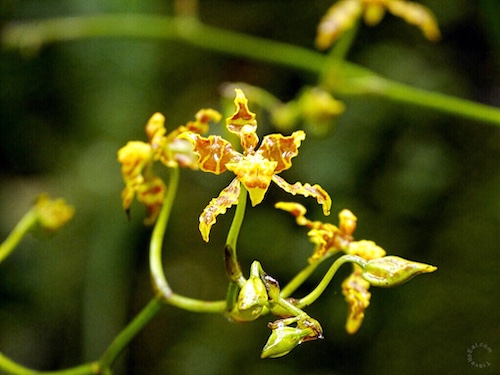
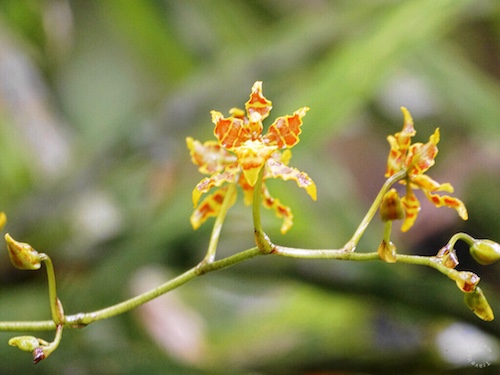
Oncidium is an extraordinarily large and diverse New World genus with an equally diverse number of habitats. Oncidiums may originate anywhere from sea level in the tropics to the high elevations of the Andes. This obviously makes cultural generalizations difficult. Common names for plants in this genus include dancing-lady orchid and golden shower orchid. In 2008, Oxfords Annals of Botany labeled the Oncidium alliance “grossly polyphyletic.” The American Orchid Society labeled this genus a “dumping ground.” After DNA testing and much debate, a consensus was announced (April 2013) resulting in major taxonomic changes to Oncidium, Gomesa, Odontoglossum, Miltonia, and others. This genus was first described by Olof Swartz in 1800 with the orchid Oncidium altissimum, which has become the type species. Its name is derived from the Greek word ὀγκος, “onkos”, meaning “swelling”. This refers to the callus at the lower lip. Options for this particular orchid are Oncidium pentatadactylon or Oncidium Colmanara wildcat orchid.
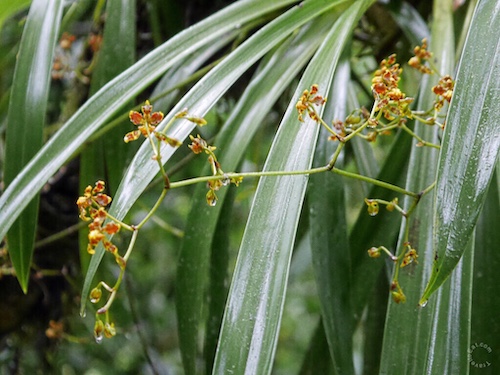
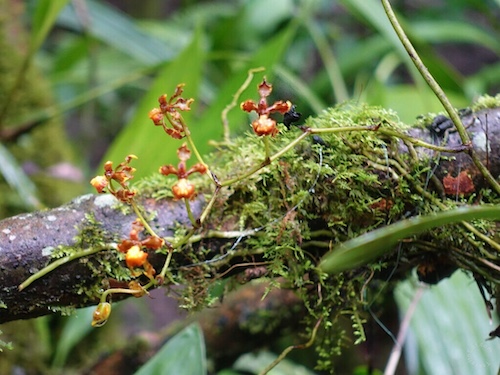
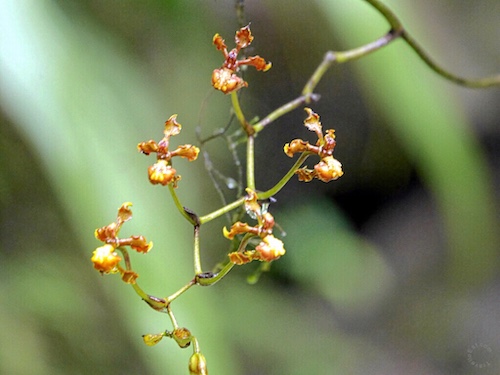
Oncidium cimiciferum (synonym Cyrtochilum cimiciferum) are found in Venezuela, Colombia, Ecuador near Quito, Peru and Bolivia at elevations around 1850 to 2250 meters as a medium sized, cool to cold growing epiphyte or terrestrial. Cyrtochilum abbreviated as Cyr. in horticultural trade, is a genus that consist of around 50 species. All of these wild Oncidium are racemes (a stem with many flowers) with fairly small and difficult to photograph flowers. In fact, if you were not looking carefully, you might pass by them without even noticing. In hybrid varieties, they have managed to make the flowers bigger and easier to appreciate. As with most orchids, naming is a playground for orchid specialists. Tiny differences can mean a different species or even genus. I am not a specialist, thus my decision on the proper genus and species is rather arbitrary, if you have any strong disagreements, please leave a comment.
Peristeria
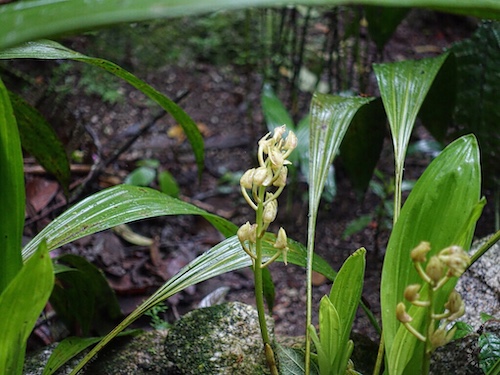
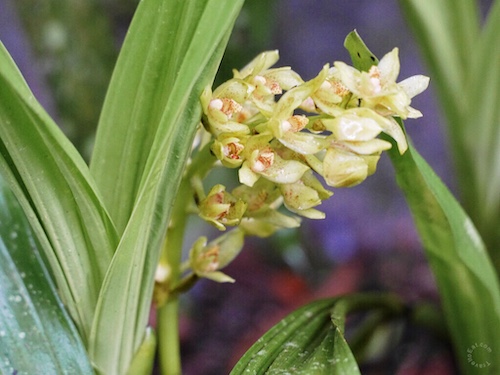
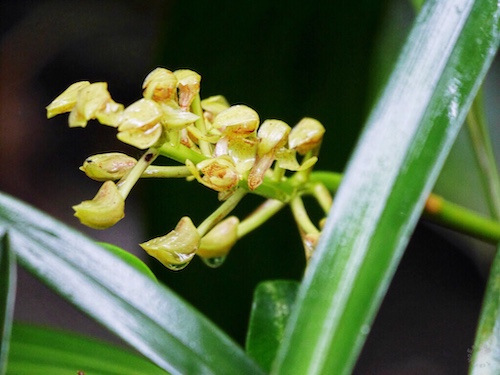
Peristeria elata (Also known as the Flower of the Holy Spirit) is an extremely rare species of orchid occurring from Central America to Ecuador and Venezuela. It is the type species of its genus. It has ovoid pseudobulbs up to 12 cm high, elongated, not fat and with four leaves that reach up to one meter of length and 15 cm of width, folded. Flowers emerge from the base of the bulb and produce 4 to 12 flowers with an intense marble white color and purple spots. The anther and pistil are yellow. The central part of the flower has a well-defined dove shape. Its perfume is similar to beer. This could also be another Perisreria sp. like Peristeria Aves de Paz due to the stippling. Scaphosepalum is also a possibility but they are usually too small.
Maxillaria gigantea
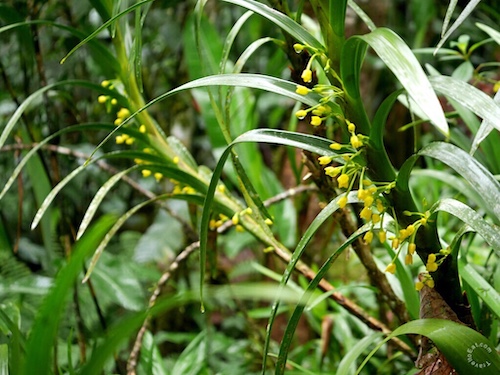
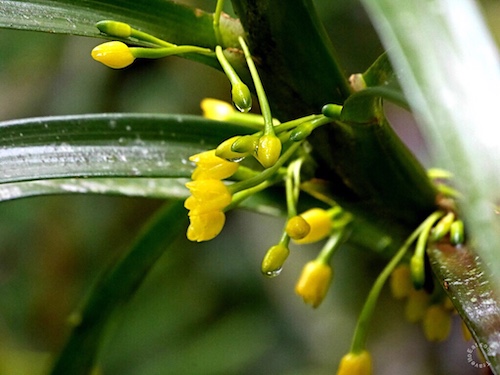
Maxillaria gigantea Lindl (synonym Ornithidium aureum) is a pretty orchid that consists of a central rather thick stem with narrow leaves and these pretty small yellow flowers emerging from the stem at the base of the leaves. It is found in Venezuela, Colombia, Ecuador, Peru and Bolivia as a terrestrial or occasional epiphyte in wet mountain forests at elevations around 1800 to 2600 meters. This is a species that has changed it’s name over time like many other orchids. Names include Maxillaria gigantea [Lindley], Ornithidium aureum, Camaridium aureum (1945), Ornithidium giganteum Lindl. 1845, Ornithidium bolivianum Schlechter 1929.
Sudamerlycaste or Lycaste or Ida
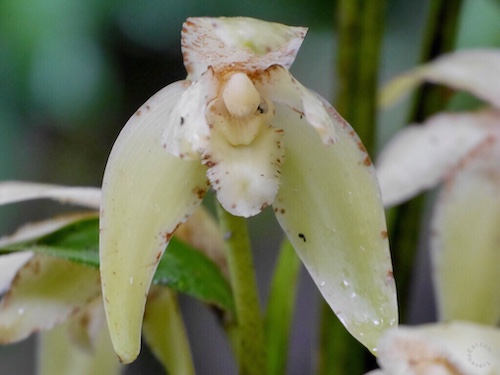
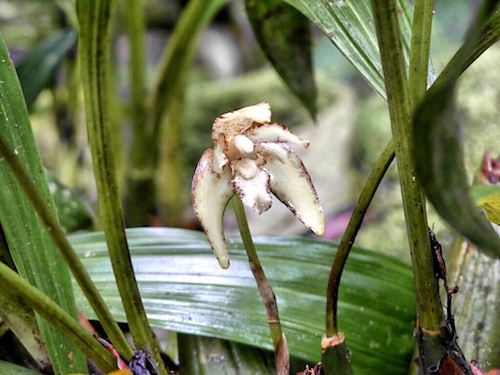
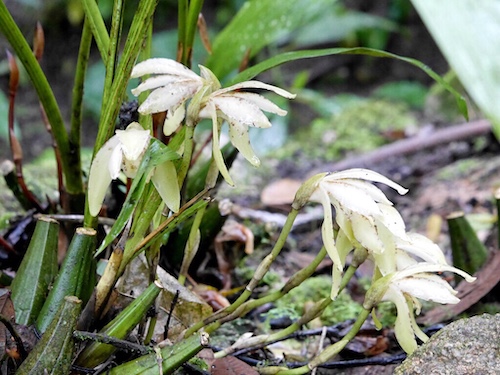
This Lycaste species had been discovered in Eastern Ecuador about 1871 by Veitch’s collector Mr. Pearce. It was described, registered, painted, cultivated and then it disappeared for over 100 years. Only in 1981, Father Angel Andreetta re-found it. Lycaste, belonging to the fimbriatae, has now been transferred into a new genus and is called Ida linguella. Others in this new genus are Ida ciliata, denningiana, locusta etc. A widespread species from the Andes region of South America, Sudamerlycaste (formerly Ida) fimbriata produces large, waxy blooms that are highly fragrant of honey. Ida is a genus of flowering plants in the orchidaceae family. It consists of approximately 35 species. The genus was split off from Lycaste in 2003 by Henry Oakeley and Angela Ryan. Species in Lycaste that were endemic to South America and the Caribbean Islands were placed into the new genus Ida and those found in Mexico and Central America stayed in Lycaste. As a result of this change most of the species previously found in the Lycaste section Fimbriatae were then moved to the genus Ida. Idas are either epiphytes or terrestrial. The genus Ida is synonymous with the genus Sudamerlycaste.
Stenia angustilabia
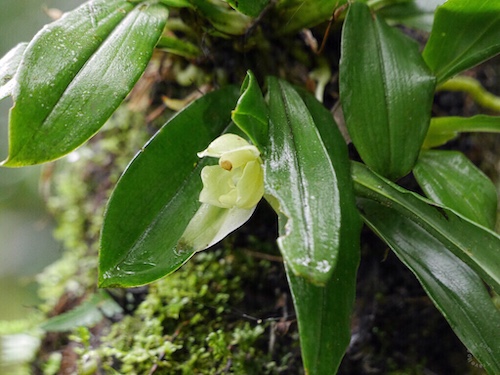
Stenia is a genus in the orchid family (Orchidaceae). It was established by John Lindley in 1837. These epiphytic plants occur in warm, humid habitats of Trinidad and the Amazonian slope of the northern Andean region in South America. Stenia plants produce a short, creeping or erect, single-flowered inflorescences, growing laterally. The flowers are medium-sized, with equal petals and sepals. All members of this genus have their flowers dominated by the large, shoe-like, concave labellum (lip) with a disc-like, toothed crest.
Encyclia
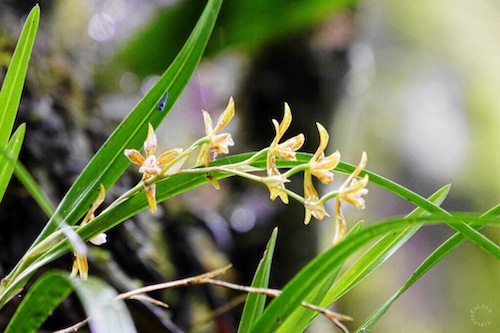
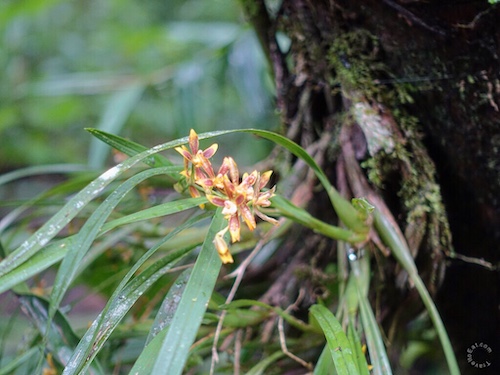
Encyclia is an orchid genus with about 170 species. It belongs to the subfamily Epidendroideae of the orchid family (Orchidaceae). Encyclia aspera is native to Columbia, Peru, and Ecuador where it grows in the Andes mountains. The species is locally common in some regions of coastal Ecuador. The flower petals and sepals are pointed and ocher or dull-yellow in color and are widely spaced on the stem. Each branch has 5 to 7 flowers. The lip is white or greenish-yellow and there are between 5 and 7 purple veins present. Encyclia aspera has a raspberry or cherry fragrance. The flower stalk has a rough texture.
Prosthechea vespa
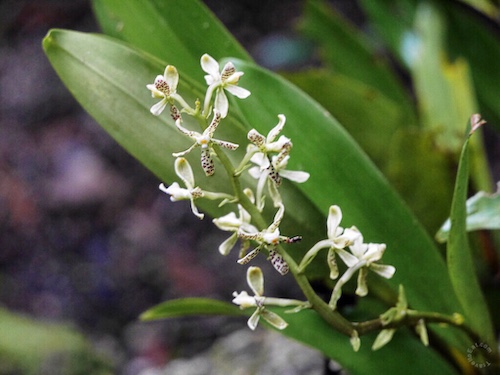
Prosthechea is a genus in the orchid family (Orchidaceae). The name is derived from the Greek word prostheke (appendix), referring to the appendage on the back of the column. Appendage orchid is a common name for this genus. The genus Prosthechea has only recently (1997; published in 1998) been reestablished by W. E. Higgins as a distinct genus. There is a great variety in the flowers of this genus. They can flower on the raceme at the same time or successively.
Stelis
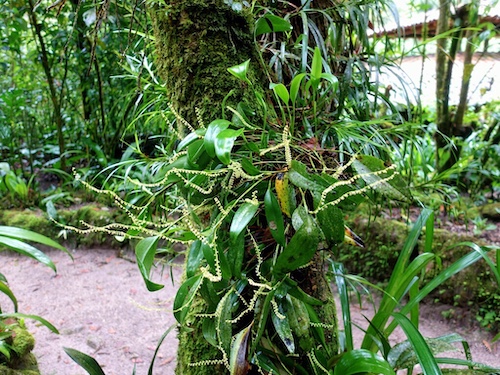
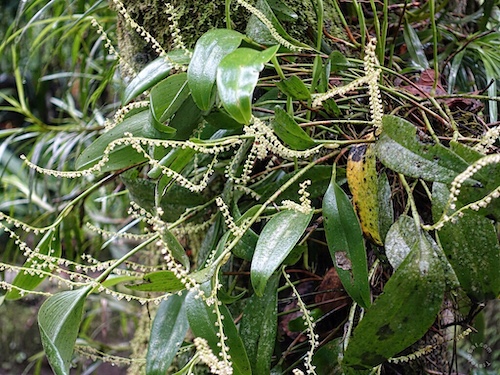
Leach orchids (genus Stelis) is a large group of orchids, with perhaps 500 species. The generic name Stelis is the Greek word for ‘mistletoe’, referring to the epiphytic habit of these species. These mainly epiphytic (rarely lithophytic) plants are widely distributed throughout much of South America, Central America, Mexico, the West Indies and Florida. Many of the older species were named by Lindley, Ruiz & Pavon and Reichenbach, while many of the recent species were named by Dr. C. Luer. An orchid of the genus Stelis was probably the first American orchid ever to be brought to Europe. An herbarium specimen was depicted in 1591 in Tabernaemontanus’ herbal book. Most species grow long, dense racemes of small to minute flower in diverse shades of white. Other colors are rare. These flowers are photosensitive, only opening in the sunlight. Some close completely at night.
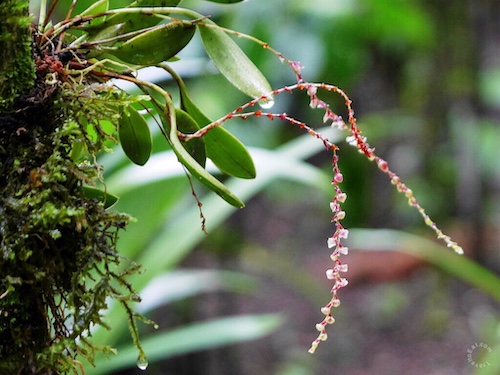
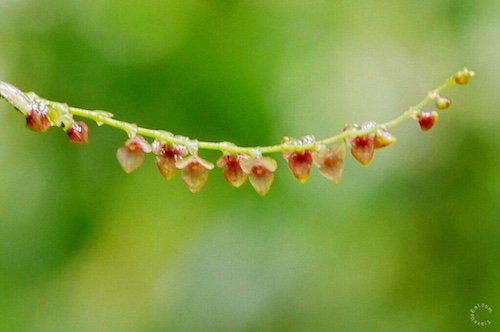
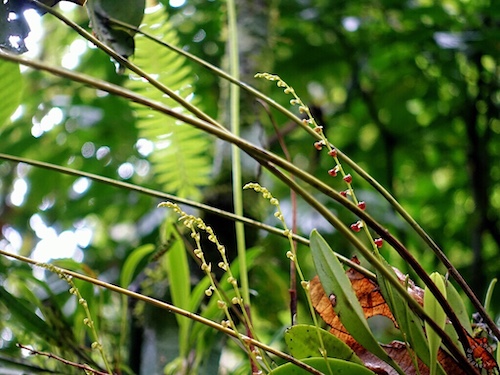
Two varieties of Stelis have mostly red tripartite blooms, Stelis argentata, and Stelis quinquenervia. Stelis quinquenervia is a species of orchid endemic to western South America and particularly Machu Picchu. Stelis argentata is found in clusters on tree branches in Mexico, Guatemala, Nicaragua, Costa Rica, Panama, Colombia, Ecuador, Peru and Venezuela at elevations of 120 to 2200 meters. Both have either red or green stems, I have assigned the names arbitrarily. The three symmetrically rounded sepals generally form a triangle with a small central structure, made up of the column, small petals and small lip, though slight variation to this theme does occur.
Pleurothallis
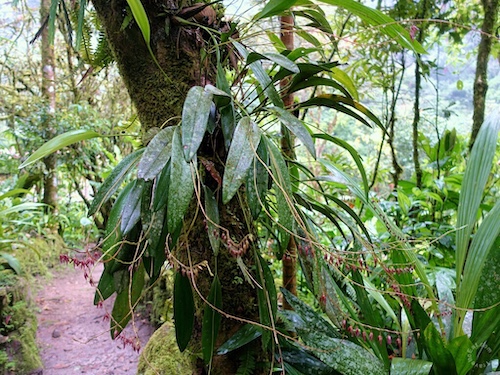
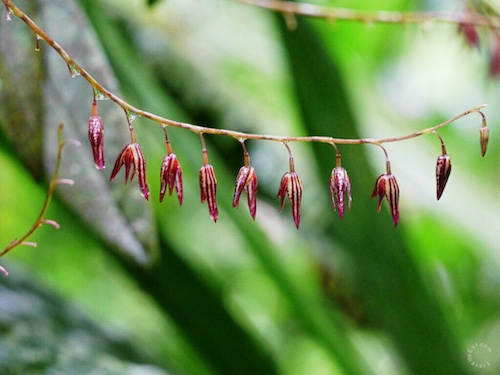
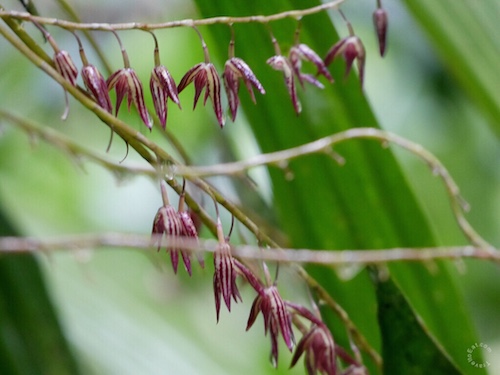
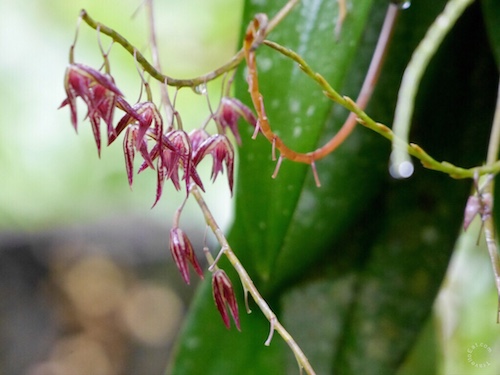
Pleurothallis, abbreviated Pths in horticultural trade, is a genus of orchids commonly named bonnet orchids. The genus name is derived from the Greek word ‘pleurothallos’, meaning ‘riblike branches’. This refers to the rib-like stems of many species. This was a huge genus, which used to contain more than 1,200 species – the second largest in the Orchidaceae after Bulbophyllum. In 2004, it decreased by more than half when many species were moved into new genera. In 2004 the new genera Acianthera, Ancipitia, Antilla, Apoda-prorepentia, Areldia, Atopoglossum, Brenesia, Crocodeilanthe were created, incorporating a large number of former Pleurothallis species. Other allied genera include: Dracula, Masdevallia, Restrepia and Stelis. Pleurothallis lamellaris is a species of orchid found from central Colombia to Bolivia. From the Latin lamellaris, “lamellate,” referring to the calli of the lip. A synonym is Humboldtia lamellaris (Lindl.) Kuntze.
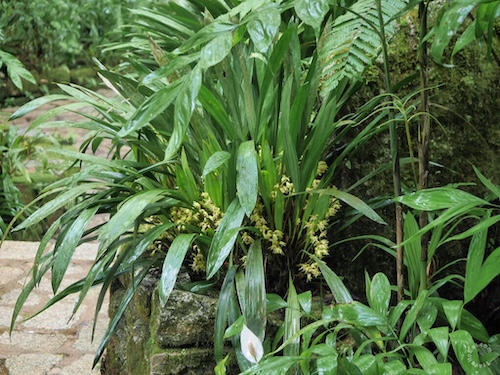
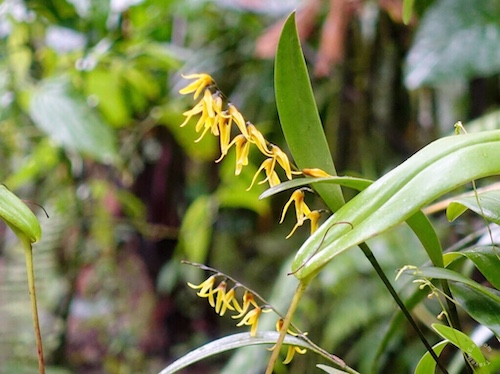
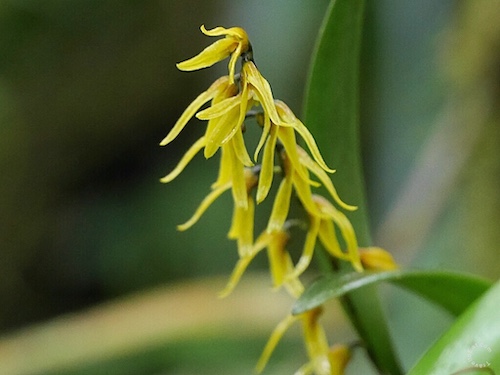
As another example of the reshuffling of Pleurothallis is the yellow orchid pictured above. I chose the classification Pleurothallis racemiflora although Acianthera (Pleurothallis) sonderana is another possibilitie. This could also be Trichosalpinx dura, commonly known as the bonnet orchid, a genus of about 100 species of neotropical orchid. Another possibility is Trichosalpinx arbuscula. As you can see, proper classification of orchids, especially with reshuffling of classifications, may be beyond the ability of mere mortals without gene sequencing and a microscope. Xylobium bractescens
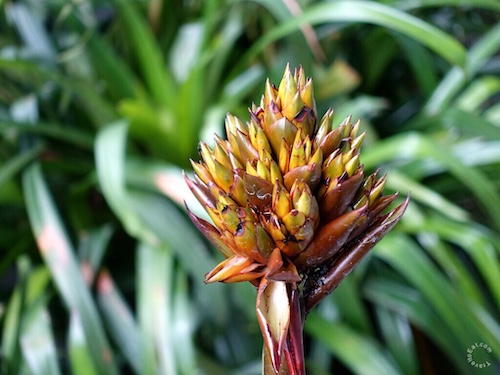
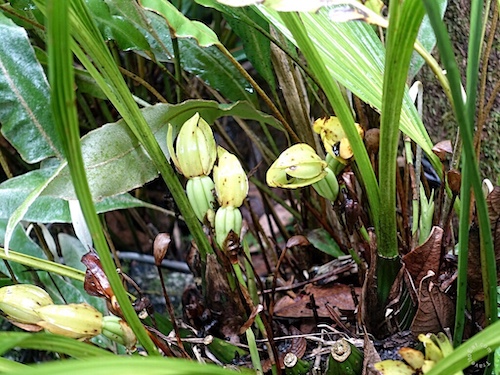
I really enjoyed my time in Peru, many more posts to come. My only regret is that I only spent two days in Aguas Caliente at the Inkaterra Hotel. If I return, I would definitely stay longer. There is so much natural beauty to see, so many flora and fauna, and of course there is the history. It is often said but this time really true that Machu Picchu is a place to visit at least once in your life. Please share your comments, particularly if you know the orchid above, I promise to reply.
[mappress mapid=”150″]
References:
Inkaterra Hotel: http://www.inkaterra.com/inkaterra/inkaterra-machu-picchu-pueblo-hotel/excursions/include/orchids/
Inkaterra Flowering Schedule: http://www.inkaterra.com/newsletters/2015/diciembre/
Field Museum: http://fieldguides.fieldmuseum.org/sites/default/files/rapid-color-guides-pdfs/181_ORCHIDS-Machu_P_v1_1.pdf
Machu Picchu Orchids: http://www.inkaterra.com/inkaterra/inkaterra-machu-picchu-pueblo-hotel/nature-explorers-g/field-guides/
Masdevallia veitchiana: http://mostbeautifulorchids.blogspot.com/2011/08/masdevallia-veitchiana.html#.Vp1T5K876K0
Hortus Veitchii: http://www.biodiversitylibrary.org/item/64394
Oncidium: http://www.flowershots.net/Oncidium%20species%201.html
Flora de Misiones: http://florademisiones.blogspot.com
Lycaste: http://canadianorchidcongress.ca/Ingrid2/lycaste/
Angel’s Orchid Gallery: http://www.angelorchidsgallery.com/
Orchid Photogallery: http://www.flowershots.net/Orchid_Photogallery.html
Stelis: http://alexanderhirtz.com/?page_id=1569

